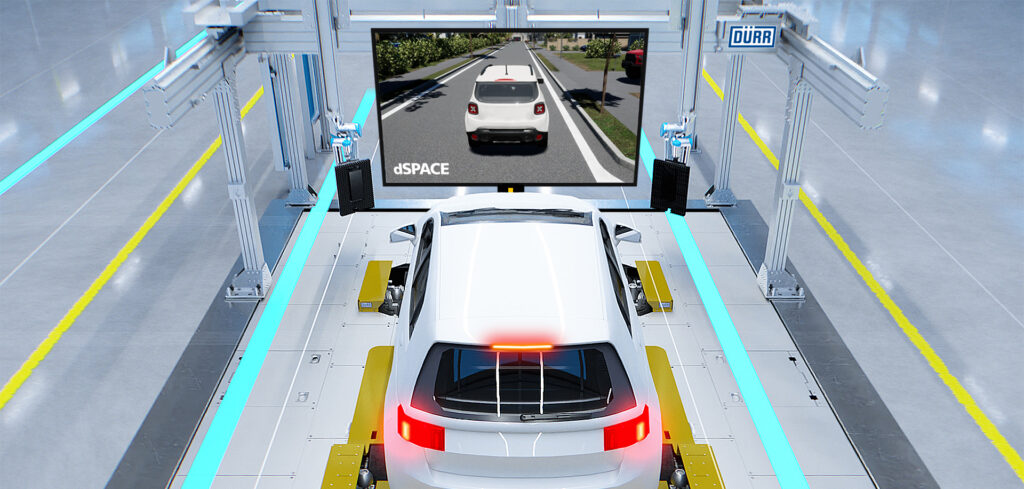Working in collaboration with simulation and validation company dSpace and machinery and equipment manufacturer Dürr, the Korea Transportation Safety Authority (KOTSA) is developing new test methods and standards to check the functionality of modern driver assistance systems during periodic main inspections. To strengthen the partnership, a memorandum of understanding has been signed between the trio and a total of €4.3m ($4.7m) has been awarded by the city and province of Gyeongsangbuk-do to support the project.
Ensuring the reliability of ADAS in the long term with the help of test methods is the subject of much discussion between vehicle monitoring authorities, and at the conference of the International Motor Vehicle Inspection Committee (CITA) – the global umbrella organization of motor vehicle inspection organizations and their suppliers – KOTSA presented its successes in ADAS functional testing using its first vehicle-in-the-loop (VIL) test setup.
KOTSA’s VIL setup consists of Dürr’s x-road curve chassis dynamometer which enables test vehicles to be accelerated, braked and steered, in addition to the DARTS radar target simulator, ASM simulation software and the Aurelion visualization tool from dSpace.
The solution enables KOTSA to create a virtual environment – especially for the camera and radar sensors installed in the test vehicle – to represent a wide variety of inspection scenarios. The scenarios include critical situations and include vehicles braking ahead suddenly or cutting in directly in front of the vehicle. In order to pass the test, the vehicle must respond to new situations in the VIL simulation in real time and, if necessary, trigger the emergency brake assistant.
Through a different project which is forecast to run until 2026, the trio will continue to develop KOTSA’s existing initial VIL setup for use in test benches throughout South Korea.
“With this procedure, test organizations and technical services worldwide have the possibility to generate reproducible and, above all, reliable test results,” said Ahmet Karaduman, consultant and project manager of ADAS vehicle-in-the-loop projects at dSpace. “The test bench is a scalable starting point for testing future highly automated vehicles.”
“Thanks to the cooperation with dSpace, we are increasing safety for all users of automated driving functions with our innovative test bench concept,” added Kai Künne, product manager for autonomous vehicle testing at Dürr subsidiary Dürr Assembly Products. “At the same time, we want to boost confidence in the autonomous vehicles of the future.”
The trio claims that this is the first time that manufacturers, inspection service providers and inspection authorities will be able to perform automatic, reproducible and traceable tests under controlled conditions at a test site.
Additionally, the group will continue to test new methods and standards to check the functionality of modern driver assistance systems during periodic main inspections.
For the latest dSpace news, click here.


